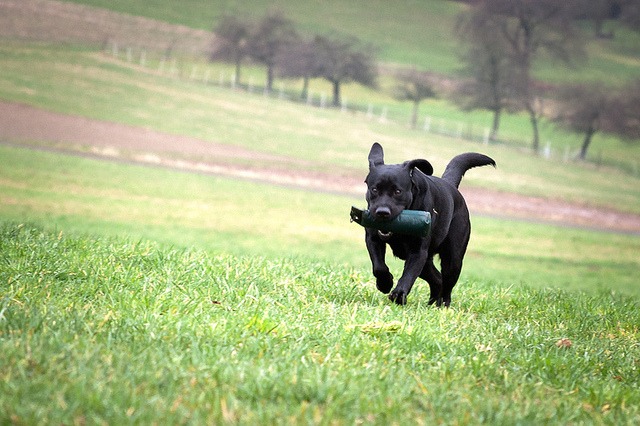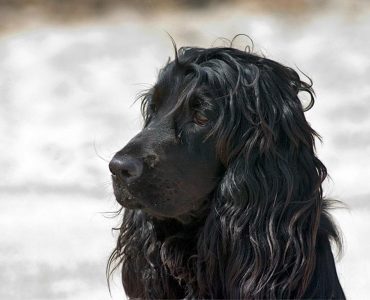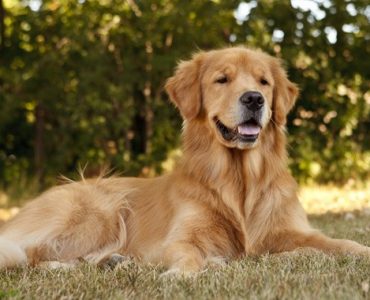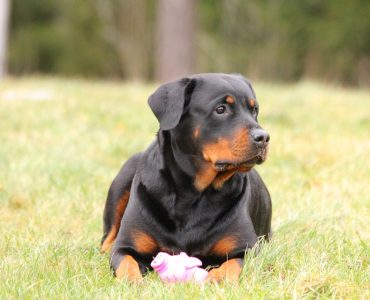This dog is recognised in three different colours. These are black, yellow, and chocolate. The popular Golden Labrador is actually a yellow variant and simply incorrectly labelled. They shed their hair twice annually, and their coats are short and smooth. They possess a powerful tail, which has been likened to that of an otter. This assists in making them excellent swimmers. Their slick topcoats are also an aid to their swimming skills by providing them with a waterproof layer. Their soft undercoat provides them with warmth in cold weather and in water. They are a medium to large sized breed but they are compact. The males are traditionally larger and heavier than the females or bitches, as they are known. They exhibit strong, blunt jaws. Eyes are brown or hazel with black lining and usually both kind and expressive.
Labrador Retrievers have a patient and gentle temperament and lend themselves well to becoming family pets. Their reputation with children and other pets is very good, and they do not usually display aggressive or destructive behaviour. Any destructive behaviour can usually be attributed to boredom or lack of exercise. They do display boisterous behaviour especially as puppies, but this can be managed with firm handling and training. Their intelligence and willing enables them to respond positively to training.
Historically, their nature makes them good work dogs and common roles for them include disabled assistance, such as guide dogs for the blind and deaf, together with hunting, tracking, rescue and therapy work. These dogs were seen in action in both the Hurricane Karina rescues and the 9/11 recovery efforts. Labrador Retrievers are unfortunately not suitable as guard dogs, as they are very easygoing and can be trusting even with complete strangers. Like all dogs, they will bark but are not overly noisy animals so do not act as a good deterrent.

Labrador Retrievers are notorious for their large and often indiscriminate appetite and enjoyment of treats. In many cases this can lead to problems of obesity and weight related joint issues, in addition to canine diabetes. Lack of activity can also compound this problem. They do not dig excessively or jump over high fences like some breeds. Other common ailments are ear infections, due to the moisture that becomes trapped in their floppy ears, and osteoarthritis, especially in overweight examples of this breed. Food allergies and allergies to environmental factors can also be seen. On average their life expectancy is around 12 to 13 years.
In conclusion, the Labrador retriever is a popular and friendly breed. They thrive on attention and love but need regular exercise to keep them healthy, as their love of food and treats can easily make them overweight.













